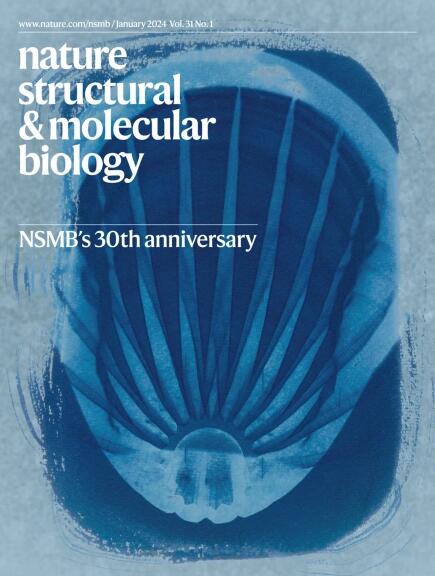A nuclear pore-anchored condensate enables germ granule organization and transgenerational epigenetic inheritance
IF 10.1
1区 生物学
Q1 BIOCHEMISTRY & MOLECULAR BIOLOGY
引用次数: 0
Abstract
Biomolecular condensates, such as stress and germ granules, often contain subcompartments. For instance, the Caenorhabditis elegans germ granule, which localizes near the outer nuclear membrane of germ cell nuclei, is composed of at least four ordered compartments, each housing distinct sets of proteins and RNAs. How these compartments form and why they are spatially ordered remains poorly understood. Here, we show that the conserved DEAD-box RNA helicase DDX-19 defines another compartment of the larger C. elegans germ granule, which we term the D compartment. The D compartment exhibits properties of a liquid condensate and forms between the outer nuclear pore filament and other compartments of the germ granule. Two nuclear pore proteins, NPP-14 and GLEL-1, are required for its formation, suggesting that the D compartment localizes adjacent to the outer nuclear membrane through interactions with the nuclear pore. The loss of DDX-19, NPP-14 or GLEL-1 leads to functional defects, including aberrant formation of the other four germ granule compartments, a loss of germline immortality and dysregulation of small RNA-based transgenerational epigenetic inheritance programs. Hence, we propose that a function of the D compartment is to anchor larger germ granules to nuclear pores, enabling germ granule compartmentalization and promoting transgenerational RNA surveillance. Lu et al. report a D compartment in Caenorhabditis elegans germ granules, formed by DEAD-box RNA helicase DDX-19 and nuclear pore proteins. This compartment anchors granules to nuclear pores, ensuring compartmentalization, RNA surveillance and germline immortality.


核孔锚定凝聚使胚芽颗粒组织和跨代表观遗传
生物分子凝聚物,如应力颗粒和胚芽颗粒,通常包含子区室。例如,秀丽隐杆线虫(Caenorhabditis elegans)的芽粒,位于生殖细胞核的外核膜附近,由至少四个有序的隔室组成,每个隔室容纳不同的蛋白质和rna。这些隔室是如何形成的,以及为什么它们在空间上是有序的,人们仍然知之甚少。在这里,我们发现保守的DEAD-box RNA解旋酶DDX-19定义了更大的秀丽隐杆线虫细菌颗粒的另一个区室,我们称之为D区室。D区室表现出液体冷凝物的性质,形成于胚芽颗粒的外核孔丝和其他区室之间。它的形成需要两种核孔蛋白NPP-14和GLEL-1,这表明D室通过与核孔的相互作用定位于外核膜附近。DDX-19、NPP-14或GLEL-1的缺失会导致功能缺陷,包括其他四个胚粒区室的异常形成、种系不朽的缺失以及基于小rna的跨代表观遗传程序的失调。因此,我们提出D区室的一个功能是将较大的胚芽颗粒锚定在核孔中,使胚芽颗粒区隔化并促进跨代RNA监测。
本文章由计算机程序翻译,如有差异,请以英文原文为准。
求助全文
约1分钟内获得全文
求助全文
来源期刊

Nature Structural & Molecular Biology
BIOCHEMISTRY & MOLECULAR BIOLOGY-BIOPHYSICS
CiteScore
22.00
自引率
1.80%
发文量
160
审稿时长
3-8 weeks
期刊介绍:
Nature Structural & Molecular Biology is a comprehensive platform that combines structural and molecular research. Our journal focuses on exploring the functional and mechanistic aspects of biological processes, emphasizing how molecular components collaborate to achieve a particular function. While structural data can shed light on these insights, our publication does not require them as a prerequisite.
 求助内容:
求助内容: 应助结果提醒方式:
应助结果提醒方式:


